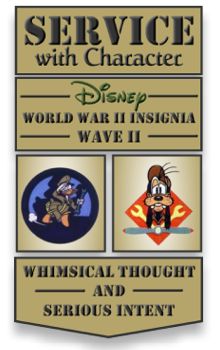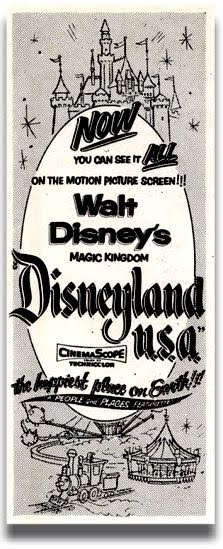An interesting scenario: An editorial staff determines that the cover illustration of a 37-year old comic book in fact, deserves a better story. Thus in 1988, the world was bequeathed a second Crocodile Collector.
Way back then (has it really been over twenty years?) I was not well educated in regard to Donald Duck and Uncle Scrooge comics, especially as they related to a gentleman named Carl Barks. But ironically, I had found my way to the talents of a certain Don Rosa, who was then working very diligently to create new Duck stories that were very much faithful to the Barks legacy.
The Crocodile Collector, published by Gladstone Comics in
Donald Duck Adventures #8, was Rosa's fourteenth Duck tale and his very first long form Donald Duck adventure. The inspiration for the story? The aforementioned illustration that was displayed on the cover of
Dell Four Color Comics #348, and drawn by none other than Carl Barks, the "good duck artist" and future Disney Legend. Barks depicted Donald standing atop an apparently hungry croc, carefully examining the creature's hide with a magnifying glass and distinctly in possession of a crocodile-skin ladies handbag.

So what was so special about the original 1951 cover illustration that lead Gladstone's editors and Rosa to create an entirely new Crocodile Collector? Gladstone staffer Byron Erickson at the time offered this explanation:
"Back In the '40s and '50s. before Donald Duck got his own comic book. he was featured in a series of 30 one-shot comics. Carl Barks had at least one story in 24 of them. One consisted of AI Taliaferro newspaper reprints and the rest were completely drawn by other artists because Barks was too busy. However. the Old Duck Man did do three covers illustrating stories he didn't draw and for a long time we've wanted to base new adventures on them so the covers could be reprinted (the original stories aren't very good)."
Rosa's story takes Donald and his nephews on a rousing and pratfall-filled journey across the African continent in search of a rare breed of crocodile immortalized by the ancient Egyptians and identified by an unusual hieroglyph-type marking on its hide. Uncle Scrooge has offered a $10,000 bounty on such a creature so to include an example of one in his zoo of exotic creatures. The story follows a familiar pattern: Donald comically bumbles through multiple escapades while the nephews do the heavy lifting via their own wits and their Junior Woodchuck Manual. Along the way they discover the source of the Nile and then ultimately uncover their prey in a mysterious and hidden ancient Egyptian temple. Rosa peppered the tale with numerous details and inside jokes, most of which pay homage to Barks. Reference is made to Barks' 1951 Donald Duck story Trail of the Unicorn. Among the occupants of Scrooge's zoo are Barney Bear, Benny Burro and Andy Panda, all MGM cartoon characters rendered for comic books by Barks. And in the ancient Egyptian temple, a caricature of Barks can be found among column-adorned hieroglyphics.
But, now let us step back to the very beginning. In late summer of 1951, Dell Comics published the 348th issue of their
Four Color Comics series. Its formal title:
Walt Disney's DONALD DUCK, THE CROCODILE COLLECTOR. The book's content was exclusively Donald Duck; it was comprised of two 16-page stories and three one-page story-gags. The lead story was
Donald Duck in "Crocodile Collector." It was only recently that I was exposed to this story for the first time. I was pleasantly surprised.

It is of course, no great masterpiece. The scope and sophistication of the story pales in comparison to the works of Barks and Rosa, but it is certainly not the dismal disaster I expected. It is small in scale compared to Rosa's globetrotting epic; Donald and nephews caper to Florida to capture a croc so to ultimately please Daisy with an alligator-skin pocketbook. (The story actually addresses the crocodile-alligator discrepancy.) Definitely long on alligator-wrestling silliness and short on plot, it still manages to succeed by way of well crafted artwork by a rather exceptional but largely unrecognized artist by the name of Frank McSavage.

McSavage first went to work for Disney in a New York City merchandising office back in 1936. Five weeks later he moved to California where he soon found himself employed at the Hyperion studio as an in-betweener and breakdown animator. After a stint with the Walter Lantz Studio and a brief return to Disney in the late 1940s, McSavage found his way to comics in 1949 by way of Western Publishing with their extensive roster of licensed characters. For the next decade, he would draw the likes of Donald Duck, Mickey Mouse, Li'l Bad Wolf, Woody Woodpecker, Andy Panda, Oswald the Rabbit and Tom and Jerry. From 1959 until his retirement in 1975, he continued to work for Western, but only produced illustrations for storybooks, primarily due to worsening eyesight.
In a history dominated primarily by names such as Barks, Gottfredson and Walt Kelly, McSavage's talents as a comic book artist have been regrettably overlooked. His disadvantage in this regard likely stems from his artist-only credentials, his legacy diminished by generally unremarkable stories of which Crocodile Collector is a good example. He was particularly adept at composing half-page splash panels and he used the additional space such panels afforded to great advantage. It was in fact the splash panels in a number of Bongo and Lumpjaw stories from Dell's Four Color Comics series that initially brought McSavage to my attention.
Though the editorial staff at Gladstone Comics was quick to dismiss this earlier effort back in 1988, there remains history and merit within those sixteen pages of Four Color Comics #348. There is plenty of room in this world for more than one Crocodile Collector.



































































